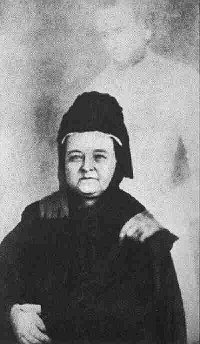Conjuring up Spirit Photography: Magic in Photography
/The impending arrival of Halloween turns our thoughts to the wide and fascinating world of spirit photography—the practice of photographing “spirits” or supernatural phenomena, such as orbs or psychic manifestations. Techniques to achieve these images have varied over the years. Early photographers experimented with composite images and double exposures. Now, there’s Photoshop. But those early photographs are highly coveted by collectors.
Spirit photography goes back to the 1860s, just decades after Louis-Jacques-Mande Daguerre invented the daguerreotype, the first commercially available form of photography.
“Photography was a brand new technology,” explained Alessandro Keegan, artist and scholar. “With new technology, there is something mystical and spooky about it. It has unknown potential.”
Spirit photography quickly became popular in the second half of the 19th century by capitalizing on a perfect storm of cultural phenomena, notably the religious revival known as the Second Great Awakening which encouraged the devout to believe in something greater than the known world. A drive to communicate with the dead intensified through the Civil War, when people were desparate for some token of their deceased loved ones. Famously, Mary Todd Lincoln was photographed with her husband’s ghost in 1872.
But Keegan also points out that the years leading up to the 1860s were prosperous, meaning people had more disposable income and could afford the high prices spirit photographs commanded.
One of the best known spirit photographers was William H. Mumler (1832-1884), creator of the Lincoln photograph. Other photographers joined the fray, including Edouard Isidore Buguet (1840-1901) and Frederick Hudson (d.1889).
Though plenty of people believed these photos were real, critics abounded, including Harry Houdini, who dedicated himself to unveiling mediums and other spiritualists as hucksters. Indeed, some spirit photographers, such as Mumler and Burget, were put on trial for fraud.
However, even when presented with compelling evidence of photo manipulation, some people still believed. When Buguet confessed to fraud, some of his clients claimed that their photographs were real even if other photographs were faked, according to Matthew Thompkins in the Spectacle of Illusion (2019). Sir Arthur Conan Doyle Went so far as to defend photographer William Hope and Crewe Circle in The Case for Spirit Photography (1923).
Spirit photography reemerged in different forms over the years. There was thoughtographer Ted Serios (1918-2006) who declared he could project his thoughts onto film and even made his way onto a segment of Arthur C. Clarke’s “World of Strange Powers” in 1985.
Today, ghost tour guides report that some participants discover orbs, concentrated spots of light, or spectral figures lurking their tour photographs.
But for Keegan, his interest in the work is not whether the spirits are “real” but the importance that these photographs have as cultural objects. “They were being used originally to support the beliefs of spiritualism,” Keegan said.
Several institutional collections exist across the country. The Getty has a collection of Mumler’s work and The Harry Ransom Center at the University of Texas at Austin has the Arthur Conan Doyle Photography Collection Literary File.
Collecting spirit photography from the 1800s is a pricey endeavor, since these images are quite rare, explained vintage photo dealer Stacy Waldman of House of Mirth. She says in twenty years as a dealer, she’s only come across one such image. Should a collector find such a picture, Waldman recommends checking the condition of the photo, noting any creases, and being aware of contrast of light and dark. Also, Waldman points out that 19th century photographers had their name attached to their photographs, so be sure to check for that, too.
Elisa Shoenberger is a researcher and writer. She has published articles and essays at the Boston Globe, the Rumpus, Deadspin, Syfy, and other outlets. She is a regular contributor to Book Riot and is the co-editor and co-founder of The Antelope: A Journal of Oral History and Mayhem.














